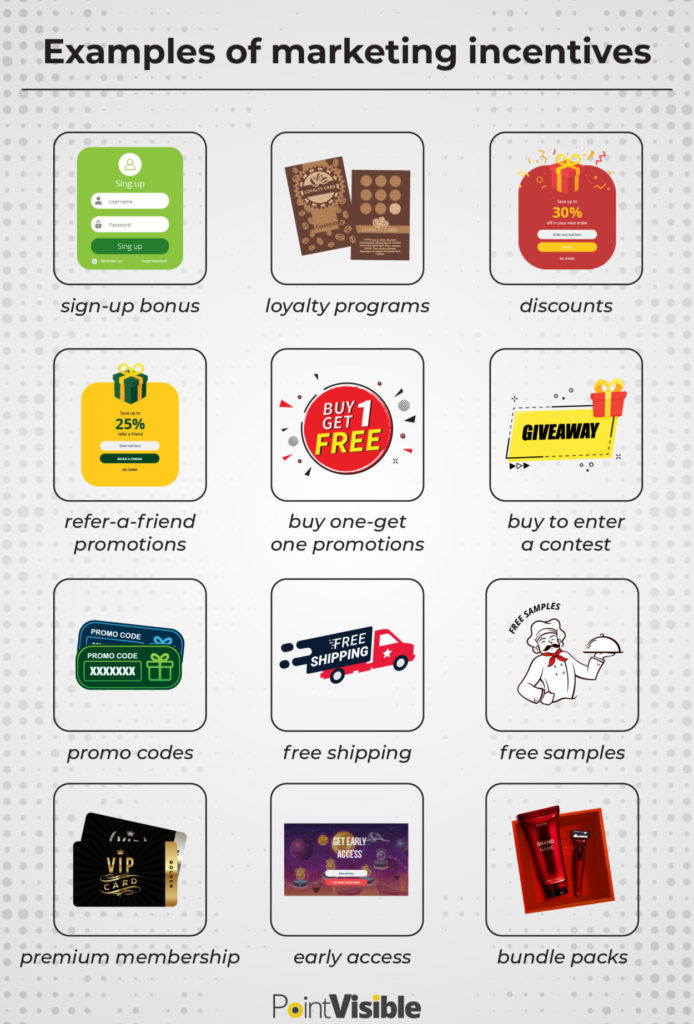In the world of advertising, finding new ways to stand out and capture the attention of your target audience is key. One effective method that can take your advertising strategy to new heights is utilizing incentives. By offering enticing rewards or benefits, you not only attract potential customers but also strengthen their connection to your brand. In this article, we will explore the various ways in which incentives can enhance your advertising strategy and help you achieve your marketing goals. From increasing customer loyalty to driving sales, discover the power of incentives and how they can revolutionize your approach to advertising.
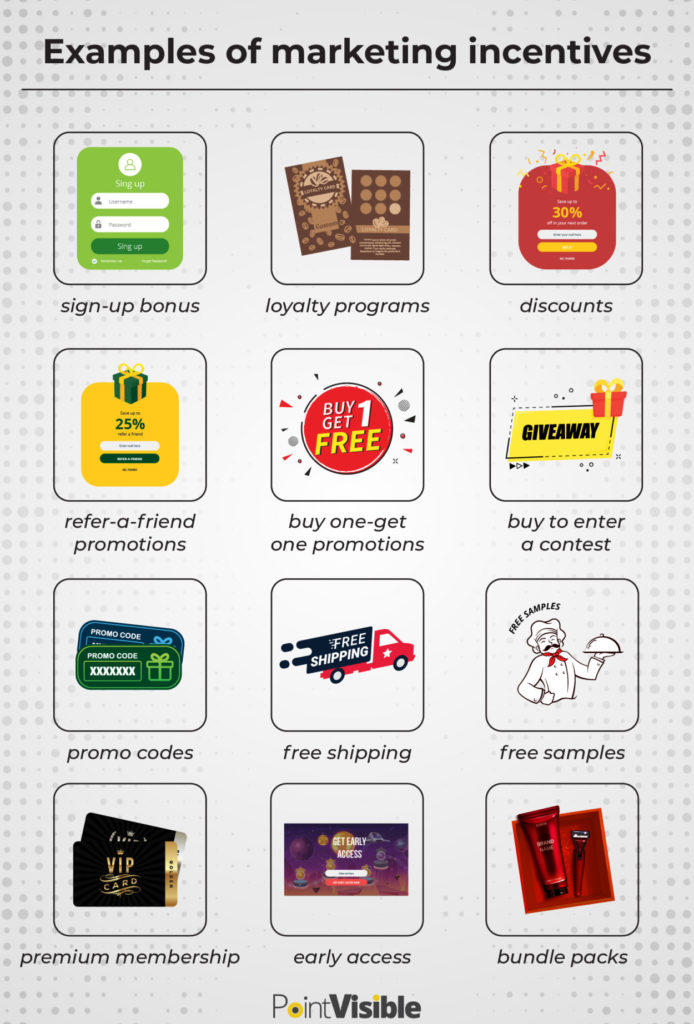
This image is property of www.pointvisible.com.
Understanding Incentives
Definition of incentives
Incentives can be defined as rewards or benefits offered to individuals or groups to encourage a specific action or behavior. In the context of advertising, incentives are used to motivate potential customers to engage with a brand, make a purchase, or take other desired actions. These rewards can take various forms, such as discounts, freebies, exclusive access, loyalty rewards, or even opportunities to win prizes. By offering incentives, businesses aim to create a sense of value and urgency that prompts consumers to take action.
Different types of incentives
There are numerous types of incentives that businesses can employ in their advertising strategies. Some commonly used incentives include:
- Discounts: Providing reduced prices or promotional codes for a limited time can entice customers to make a purchase or try a product.
- Freebies: Offering free samples, gifts, or add-ons with a purchase can attract potential customers and encourage them to choose a brand over competitors.
- Loyalty programs: Implementing rewards programs that offer points, exclusive offers, or special benefits to frequent customers can increase customer retention and encourage repeat purchases.
- Contests and giveaways: Engaging customers through contests or giveaways not only helps build excitement and generate brand awareness but also encourages participation and engagement.
- Access to exclusive content or events: Offering access to exclusive content, events, or pre-sales can make customers feel valued and create a sense of exclusivity that promotes brand loyalty.
- Referral programs: Encouraging customers to refer others to a brand by providing incentives, such as discounts or rewards, can help expand the customer base and increase brand advocacy.
Importance of incentives in advertising
Incentives play a crucial role in modern advertising strategies. They serve as powerful tools for capturing the attention of potential customers, driving engagement, and ultimately increasing sales. By offering incentives, businesses can effectively differentiate themselves in competitive markets, build brand loyalty, and foster long-term customer relationships.
Benefits of Using Incentives in Advertising
Increased customer engagement
One of the key advantages of incorporating incentives into advertising is the ability to boost customer engagement. Incentives provide a compelling reason for customers to interact with a brand, whether it’s by visiting a website, signing up for a newsletter, or making a purchase. The promise of a reward or benefit motivates customers to take action, increasing their engagement and participation with a brand’s offerings.
Higher conversion rates
Incentives can significantly impact conversion rates by influencing customers’ purchase decisions. When presented with an attractive incentive, customers are more likely to make a purchase, as the added value or benefit increases the perceived value of the product or service. By providing an extra incentive, such as a limited-time discount or a free gift, businesses can effectively drive conversions and turn potential customers into paying ones.
Improved brand loyalty
By consistently offering incentives to existing customers, businesses can strengthen their relationships and foster brand loyalty. Loyalty programs that reward customers for their repeat business not only incentivize them to keep coming back but also make them feel valued and appreciated. This emotional connection can lead to long-term customer loyalty, increased customer lifetime value, and positive word-of-mouth referrals.
Enhanced brand awareness
Incentive-driven advertising campaigns have the potential to increase brand awareness and reach. Contests, giveaways, and referral programs, for example, can encourage customers to spread the word about a brand to their friends and followers, amplifying the brand’s reach and visibility. Additionally, the excitement generated by incentives can generate buzz on social media platforms, further expanding the brand’s exposure and attracting new customers.
Choosing the Right Incentives
Understanding your target audience
When selecting incentives for your advertising strategy, it’s essential to have a deep understanding of your target audience. By understanding their preferences, motivations, and interests, you can tailor your incentives to resonate with their needs and desires. Conducting market research, analyzing customer data, and soliciting feedback can provide valuable insights into what types of incentives are most likely to attract and engage your target audience.
Aligning incentives with your brand values
Incentives should align with your brand values and overall marketing strategy. It’s crucial to ensure that the rewards or benefits you offer are consistent with your brand’s image, mission, and positioning. For example, if your brand is known for its sustainability efforts, offering eco-friendly incentives or partnering with environmentally conscious organizations can showcase your commitment to your values and attract like-minded customers.
Considering the cost-effectiveness of incentives
While incentives can yield significant returns, it’s important to consider their cost-effectiveness. Assessing the potential impact of incentives on your advertising goals and comparing it to the associated costs can help determine the optimal mix of incentives to use. It may be useful to test different incentives and measure their effectiveness before scaling up your efforts to ensure you’re investing in incentives that deliver a positive return on investment.
Incentives for Different Advertising Channels
Incentives for online advertising
In the digital age, online advertising presents a vast array of opportunities for businesses to reach their target audience. When it comes to online advertising, incentives can be particularly effective in driving customer engagement and conversions. Some examples of incentives for online advertising include offering exclusive discounts or promo codes for online purchases, providing free shipping or returns, or giving early access to new products or services. Additionally, offering incentives for signing up for newsletters, following social media accounts, or providing feedback can help businesses grow their online presence and connect with their target audience.
Incentives for traditional advertising
Traditional advertising channels, such as print media, television, and radio, still play a significant role in reaching certain demographics. Incentives for traditional advertising might involve coupons or special offers featured in print ads, sponsoring local events or charity initiatives, or providing promotional merchandise at trade shows or conferences. By incorporating incentives into traditional advertising, businesses can attract attention, create a favorable impression, and drive consumers to take action.
Incentives for social media advertising
Social media platforms have become powerful advertising channels, allowing businesses to target specific audiences and reach them directly. Incentives for social media advertising can include running contests or giveaways, offering exclusive access to content or events for followers, collaborating with influencers or brand ambassadors, or providing early access to limited-edition products. Using well-crafted incentives, businesses can leverage the power of social media to increase engagement, expand their customer base, and foster authentic connections with their audience.
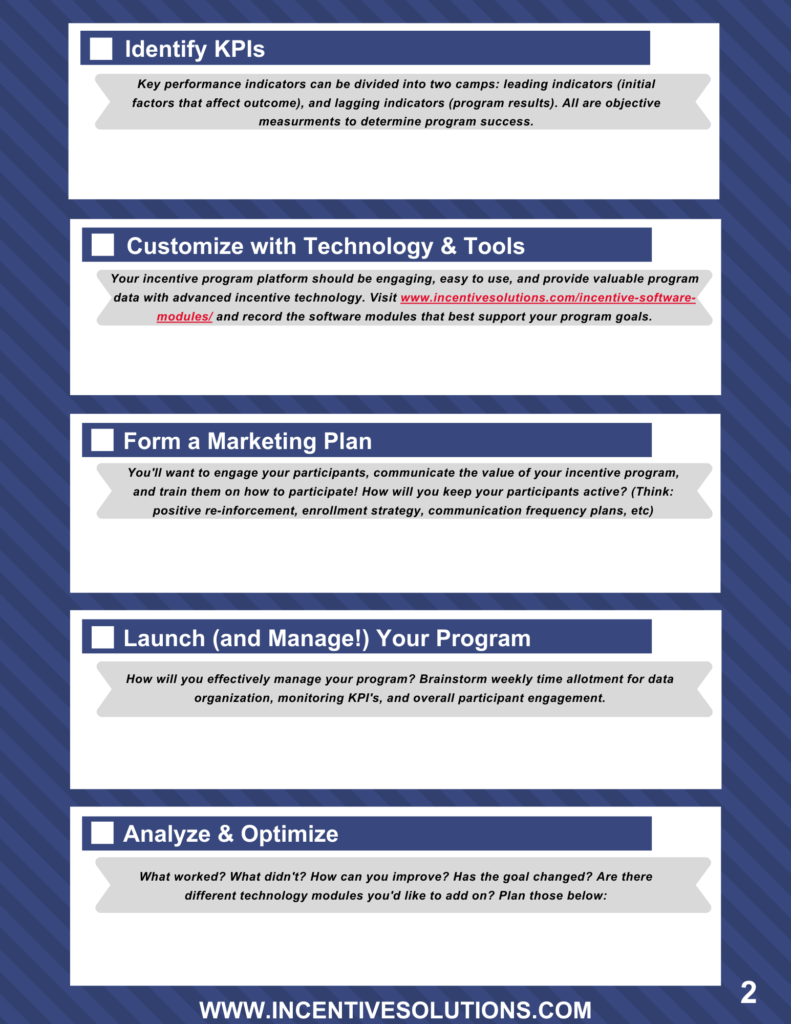
This image is property of incentivesolutions.com.
Creating Effective Incentive Programs
Setting clear objectives
Before implementing an incentive program, it’s essential to define clear objectives. Clearly outlining what you want to achieve with your incentives will help guide your strategy and ensure that your incentives align with your overall business goals. Whether it’s increasing sales, boosting customer loyalty, or generating brand awareness, establishing measurable objectives will enable you to track the effectiveness of your incentive programs and make data-driven decisions.
Defining specific incentives
Once your objectives are established, it’s crucial to define the specific incentives that will help you achieve those objectives. Consider the preferences and motivations of your target audience and identify the incentives that are most likely to resonate with them. Whether it’s offering discounts, providing exclusive access, or implementing a loyalty program, make sure your incentives align with your audience’s needs and desires to maximize their impact.
Structuring incentive programs
The structure of your incentive program plays a vital role in its success. Consider factors such as duration, eligibility criteria, and reward levels when structuring your program. It’s important to strike a balance between providing enough value to entice customers without significant financial strain on your business. Providing achievable goals and clearly communicating the program’s structure and benefits will enhance participants’ understanding and increase their likelihood of participation.
Promoting incentive programs
Even the most well-designed incentive programs won’t be effective if customers are unaware of them. Promoting your incentive programs through various channels is crucial to ensure maximum participation. Utilize social media platforms, email newsletters, website banners, and other advertising channels to spread the word about your incentives. Clear and compelling promotional messages that highlight the value and benefits of participating in your incentive programs will capture the attention of your target audience and encourage them to take action.
Measuring the Impact of Incentives
Identifying relevant metrics
To determine the effectiveness of your incentive programs, it’s important to identify and track relevant metrics. Depending on your objectives, these metrics may include sales revenue, customer acquisition or retention rates, website traffic, social media engagement, or customer satisfaction scores. By measuring the impact of your incentives on these metrics, you can gain insights into the success of your programs and make data-driven decisions to optimize your advertising strategy.
Tracking the performance of incentive campaigns
Tracking the performance of your incentive campaigns is essential to understand their impact and make any necessary adjustments. Utilize analytics tools, track coupon codes or promo links, and monitor engagement metrics to gather data on how customers are responding to your incentives. Analyzing this data can help you identify trends, assess the effectiveness of different incentives, and identify areas for improvement.
Analyzing data and making adjustments
Data analysis plays a crucial role in refining your incentive strategies. By carefully analyzing the data collected from your incentive campaigns, you can identify patterns, trends, or areas of improvement. Evaluate the success of different incentives, identify any discrepancies or challenges, and make adjustments to optimize your incentive programs for maximum impact. Data-driven decision-making allows you to continuously improve your advertising strategy and stay ahead of your competition.
Potential Challenges and Solutions
Overcoming budget limitations
One challenge businesses may face when implementing incentive programs is budget limitations. To overcome this challenge, it’s important to carefully plan and allocate your resources. Start with small-scale incentive programs that offer reasonable rewards, and gradually expand as you see positive results. Consider partnering with other businesses or influencers to share the costs and reach a wider audience. Additionally, focusing on cost-effective incentives, such as exclusive access or personalized experiences, can provide significant value at a lower cost.
Avoiding devaluation of incentives
Another challenge in using incentives is the potential devaluation of these rewards over time. Customers may become accustomed to receiving discounts or rewards, making them less motivated to take action. To avoid devaluation, businesses can periodically refresh their incentives by introducing new rewards or adjusting the terms and conditions. Additionally, maintaining a sense of exclusivity by offering limited-time offers or tiered rewards can help preserve the perceived value of incentives.
Managing customer expectations
When using incentives, it’s crucial to manage customer expectations to avoid any disappointment or negative experiences. Clearly communicate the terms and conditions of your incentives, including eligibility criteria, expiration dates, and any limitations. Providing detailed instructions on how to redeem rewards or participate in incentive programs can help ensure a seamless and positive customer experience. Regularly communicate with customers about the status of their rewards or progress in loyalty programs to keep them engaged and informed.
Dealing with fraud or misuse of incentives
While incentives can drive positive customer actions, there is always a risk of fraud or misuse. To mitigate this risk, establish clear guidelines and policies regarding the use of incentives. Implement measures to prevent fraud, such as unique codes or verification processes. Regularly monitor and audit the use of incentives to identify any suspicious activity. By maintaining transparency and accountability, businesses can minimize the risk while ensuring fair and ethical use of incentives.
Case Studies of Successful Incentive Strategies
Company A: Increasing sales through exclusive discounts
Company A, a leading clothing retailer, successfully enhanced its advertising strategy by offering exclusive discounts to its email subscribers. By regularly sending out personalized discount codes and targeted promotions, they saw a significant increase in sales and customer engagement. The incentives provided a sense of value and urgency, prompting customers to make purchases and fostering a loyal customer base.
Company B: Boosting customer loyalty with rewards program
Company B, an online beauty brand, implemented a tiered rewards program to enhance customer loyalty. By providing various rewards based on customer spending levels, they incentivized customers to make repeat purchases and reach higher tiers for greater benefits. The program not only fostered brand loyalty but also led to increased customer retention and positive word-of-mouth referrals, ultimately driving the brand’s growth.
Company C: Generating social media buzz through contests
Company C, a beverage company, successfully generated social media buzz and increased brand awareness by running a series of creative contests. By encouraging users to share posts, tag friends, or create user-generated content, they incentivized their audience to become brand advocates. This not only expanded their reach but also created a sense of community and engagement among their target audience.
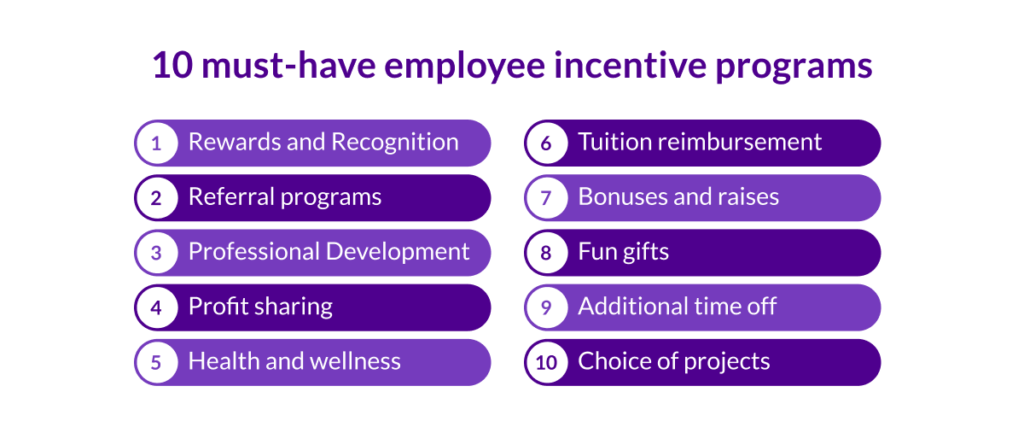
This image is property of www.achievers.com.
Ethical Considerations of Using Incentives
Ensuring transparency and honesty
When utilizing incentives in advertising, it’s crucial to ensure transparency and honesty in all communication with customers. Clearly disclose any terms, conditions, or limitations of the incentives to avoid misleading or deceiving customers. Providing accurate information about the rewards, eligibility criteria, and redemption process builds trust and fosters a positive relationship with customers.
Avoiding misleading or deceptive practices
Incentives should be presented in a way that is honest, accurate, and does not mislead or deceive customers. Businesses should refrain from exaggerating the value of incentives or making false claims to entice customers. Genuine and transparent communication regarding the rewards and benefits associated with the incentives is essential to maintain the trust and loyalty of customers.
Respecting consumer privacy
When implementing incentive programs, businesses must prioritize the privacy and data security of their customers. Collecting and storing customer data should comply with applicable privacy regulations and guidelines. Transparently explain to customers what data will be collected, how it will be used, and ensure that their consent is obtained. Respecting consumer privacy is crucial to maintain customer trust and protect their sensitive information.
Conclusion
Incentives can have a significant impact on advertising strategies, enhancing customer engagement, conversion rates, brand loyalty, and awareness. By understanding your target audience, aligning incentives with your brand values, and considering the cost-effectiveness of incentives, you can successfully incorporate incentives into your advertising strategy. Whether it’s online advertising, traditional advertising, or social media advertising, carefully selecting the right incentives for each channel can maximize their impact. Creating effective incentive programs involves setting clear objectives, defining specific incentives, structuring programs, and promoting them effectively. Measuring the impact of incentives, identifying relevant metrics, and analyzing data allow for continuous improvement. While challenges may arise, such as budget limitations or devaluation of incentives, solutions can be found through careful planning and customer-centric approaches. Ethical considerations should guide the use of incentives, ensuring transparency, avoiding misleading practices, and respecting consumer privacy. By utilizing case studies and real-world examples, businesses can gain inspiration and insight into successful incentive strategies. Ultimately, by incorporating incentives into your advertising strategy with a focus on ethics and data-driven decision-making, you can enhance your brand’s reach, engage customers, and drive meaningful results.
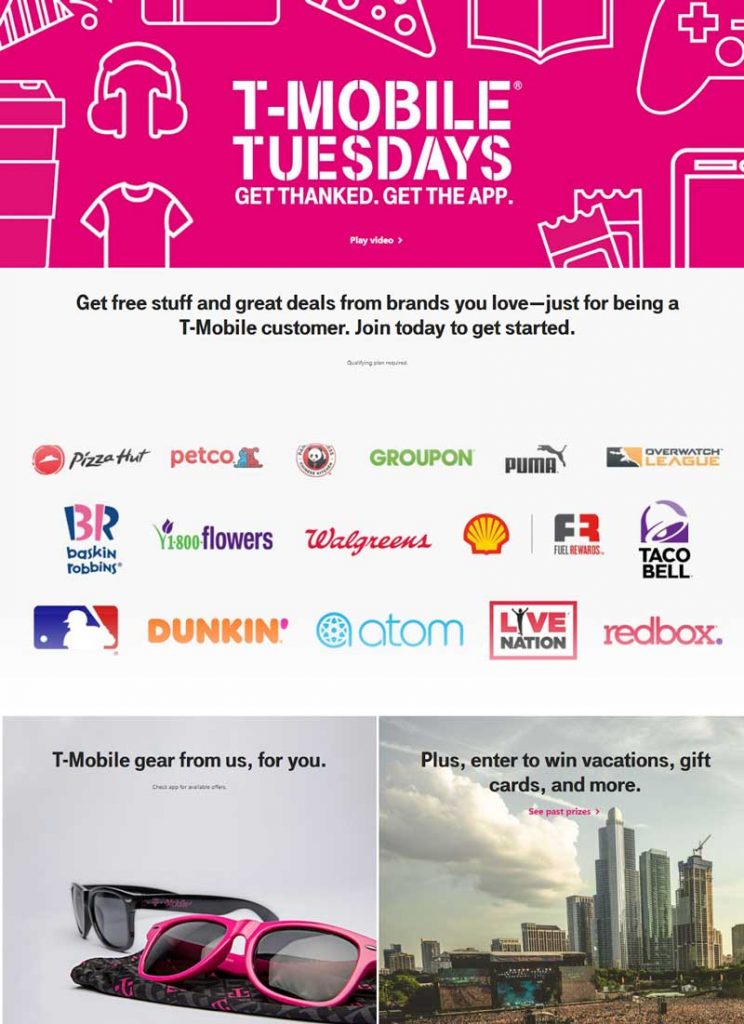
This image is property of referralrock.com.


